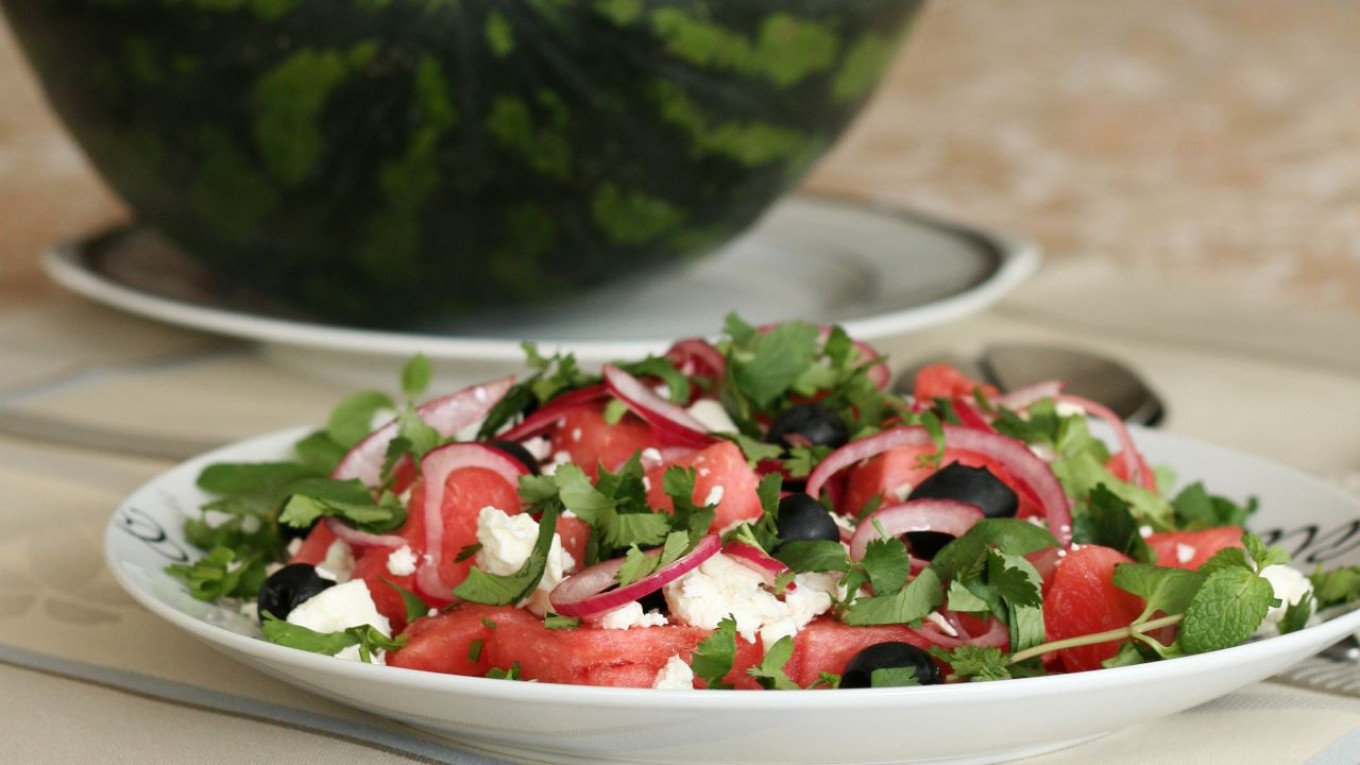The Russian state appeared on the map and watermelons appeared on the table at almost the same time for people living in what is now Russia. The country got its present name after Grand Duke Ivan IV of Moscow was proclaimed tsar in 1547. The land he possessed became known as the Russian Kingdom. And that's when his subjects were introduced to watermelons.
The campaign to capture Astrakhan in 1554 was a major military success for the tsar, who later became known as Ivan the Terrible. One of the prizes of this campaign was the locally grown watermelon. Russians were just beginning to grow and eat them. For another hundred years they remained a delicacy enjoyed mainly by the monarch and his entourage. Even in 1660 Tsar Alexei Mikhailovich sent the Astrakhan leaders, Prince Dmitry Lvov and Nikifor Beklemishev, instructions: "... send watermelons to Moscow from Astrakhan — send the first watermelons of July on the 8th day, so that those watermelons will reach Moscow by September 1. I order that the watermelons be sent in military or light river boats (flat-bottomed barges). And to keep them from the cold, use Astrakhan sheepskins, felt and bast matting.”
Almost two months on the road... No wonder the tsar became obsessed with the idea of growing watermelons closer to home. And on November 11, 1660 Tsar Alexei Mikhailovich ordered cultivation of watermelons in Chuguev (near Kharkiv). When they were ripe, he ordered them sent to the court.
By the 18th and 19th centuries the best watermelons were grown in Saratov. The historian Alexander Tereshchenko (1806-1865) noted that best melons were raised not far from the town of Kamyshin on farms where serfs owned by the tsar lived and worked. "The soil here is sandy, which is best for growing watermelons, and there is the sunny hot weather with occassional rain that they like. Watermelons are about 1.5 arshins (almost a meter) in circumference or about 30 cm in diameter, and weigh more than a pood (16 kg)".
Russians have enjoyed watermelons since the end of the 18th century. There was even a story involving watermelons among the tales about Prince Potemkin, a favorite of Catherine II. During his stay in Dubossary in Bessarabia, a peasant learned that the Prince loved cucumbers and brought him several he grew in the spring. The Prince was surprised that the gardener had raised cucumbers so early in the season and rewarded him generously. The story of the gardener’s good fortune quickly spread through the district. When summer came and there were plenty of ripe cucumbers in the vegetable bed, one peasant woman began to badger her husband to bring cucumbers to His Lordship.
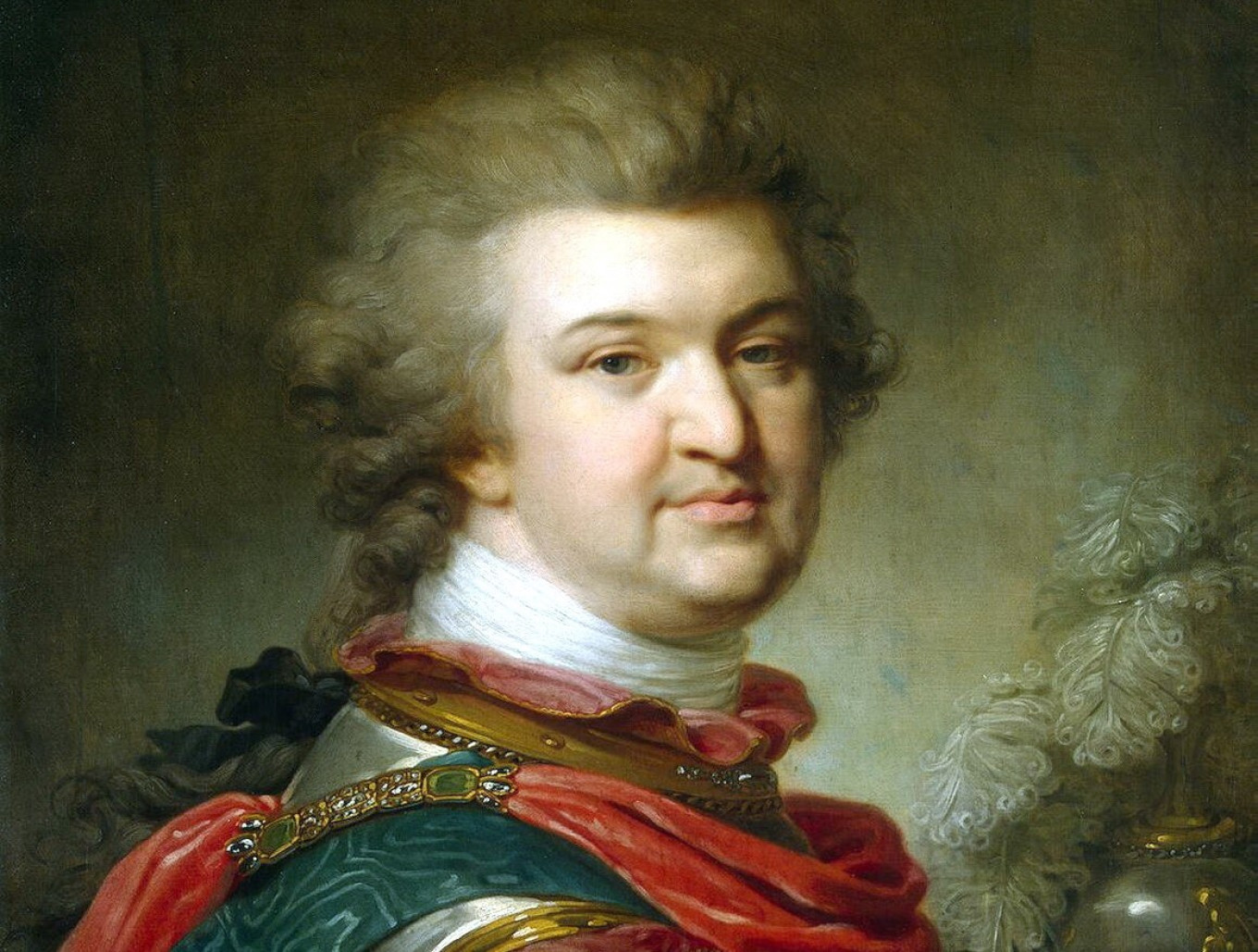
“Bring him a wagonful,” she urged him. “The Prince will make you rich!”
He stubbornly refused but his wife would not leave him in peace. She was determined to send him to Dubossary with a wagon-load of cucumbers. She suggested he also bring several large watermelons, but he refused.
Potemkin was informed of the arrival of the man and his gift. At that moment the Prince happened to be in a terrible mood over something, and he angrily shouted, “Dump those cucumbers on his head!” His servants began to carry out his orders literally. But as the man was being pelted by cucumbers, he wasn’t thinking how painful it was but thinking how much more painful it would have been if he’d brought watermelons. He was very pleased with his foresight.
“I did well,” he said, “not to listen to my old woman and not to take the watermelons. I would have been dead by now if I had.”
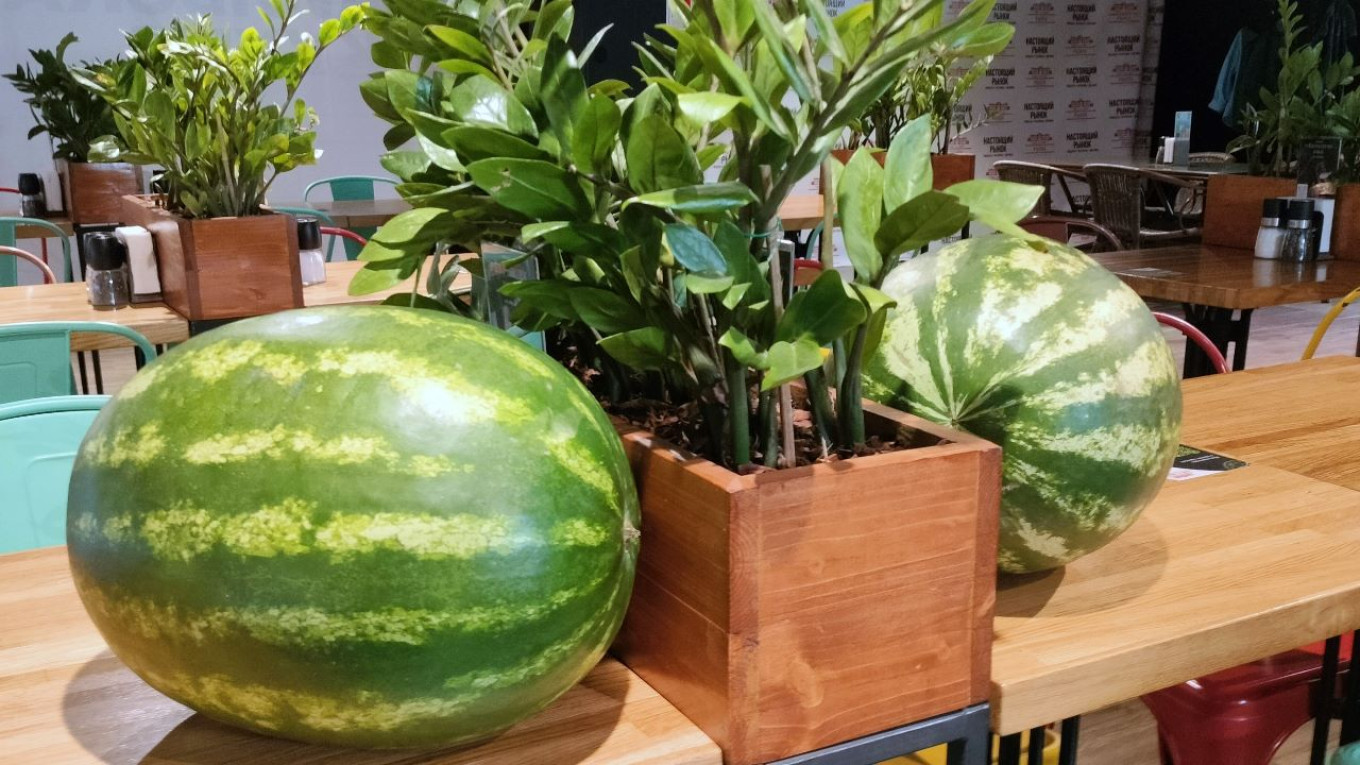
The servants laughed. Potemkin was watching through from his window and surprised to see them laughing. He sent someone to find out what was going on. The story about the gardener immediately changed the Prince’s mood. He smiled and instructed that the man be given a large sum of money.
What did they make from watermelons then? Of course, people ate them straight from the fields — often with bread. But they also made some dishes out of watermelon that are almost forgotten today.
Watermelon honey (нардек [nardek]) is a favorite dish of the Cossacks. It was prepared on the Don, in Astrakhan, and in Tsaritsyn (now Volgograd) in all regions with large Cossack settlements. This military class seemed to have a weakness for sweets. The preparation of watermelon honey was simple. The sweet red flesh of watermelons was pressed through a sieve to produce juice, which was boiled down until thick. It took 16-17 kg of sweet watermelons to produce 1 kg of honey.

In the province of Saratov, people made watermelon jam — not from the sweet flesh, but from the rind. They’d remove the green peel and then cut various shapes out of the white rind: triangles, crosses, circles, stars and so on. They would boil the rinds in honey or sugar. When the shapes were thoroughly cooked, they were translucent and amber colored, and the jam had a delightful flavor.
Watermelons aren’t only summer food; they can be eaten in the winter, but in a different way. Cooks pickle watermelons like they pickle cucumbers, and if they are pickled well, they’re delicious. In the 19th century cookbooks, the authors wrote that pickled watermelon are best when the watermelons pickle themselves.
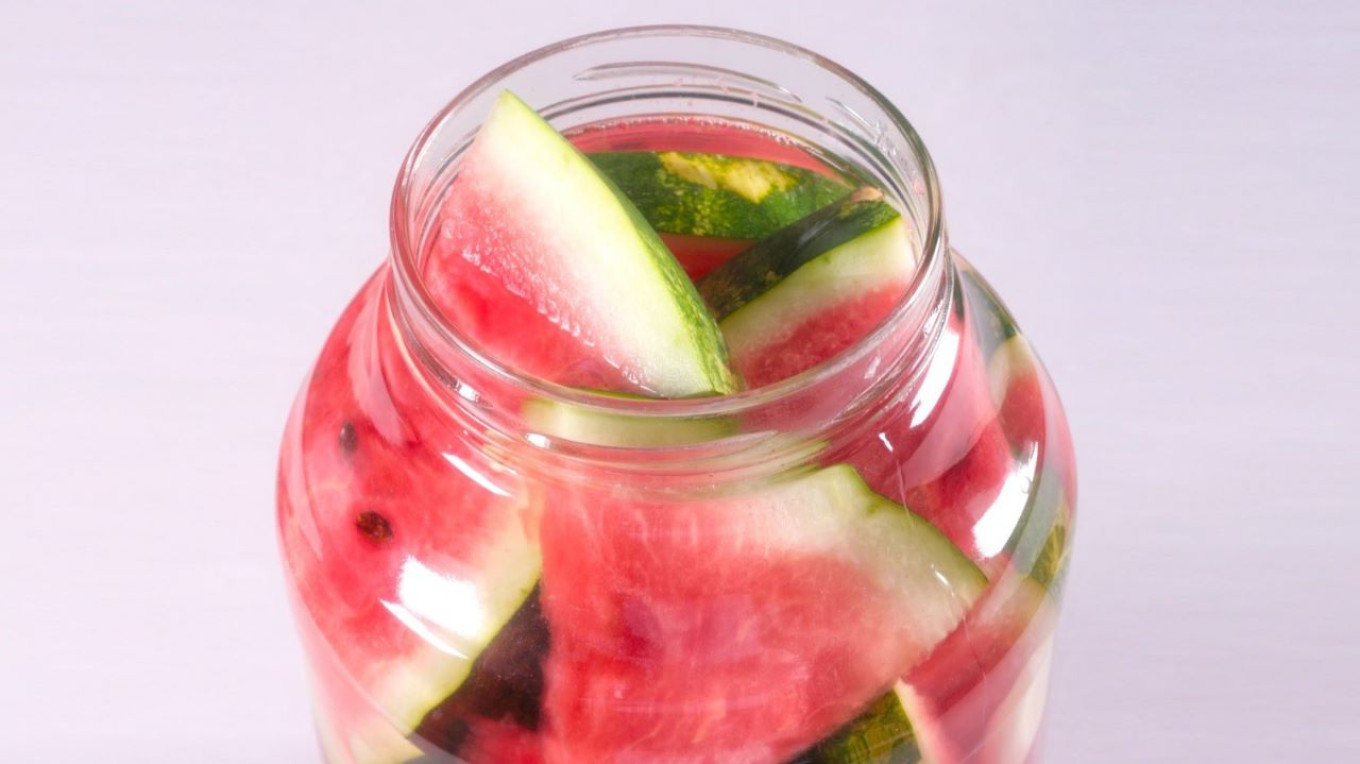
What does that mean? Pieces of watermelon are packed into a jar or crock and chopped watermelon flesh is poured into the spaces between the pieces — the more, the better. Then brine is poured over it all. The chopped up watermelon turns to juice and mixes with the brine to preserve the sweetness and flavor of the watermelon pieces.
Watermelon honey and pickled watermelons are delicious, but they are very labor-intensive. In the summer, you want something light and easy. Try our favorite watermelon salad with red onions, black olives and feta cheese. Sweet watermelon and salty cheese are absolutely delicious. Make an extra-large serving; it disappears off the plate in an instant.
Watermelon and Feta Salad
Ingredients
- 400 g (1 scant lb) watermelon flesh (without seeds)
- 150 g (generous 5 oz) feta cheese
- 100 g (3.5 oz or about 2/3 c) red sweet onion
- 70 g (2.5 oz or about 20-25) pitted black olives
- 3-4 sprigs of mint
For the dressing
- 40 ml (2 ½ Tbsp) olive oil
- juice of half a lime
- coarse salt
Instructions
- Make the dressing: mix together the olive oil, lime juice and salt.
- Cut the watermelon into 2.5-3 cm (about an inch) cubes
- Slice the onion into thin half rings.
- Place the watermelon cubes on a serving platter and crumble the feta cheese in chunks on top. (Do not crumble the cheese too finely.)
- Sprinkle the onions and olives on the salad.
- Drizzle the salad with the dressing.
- Tear off the leaves from mint to garnish the salad.
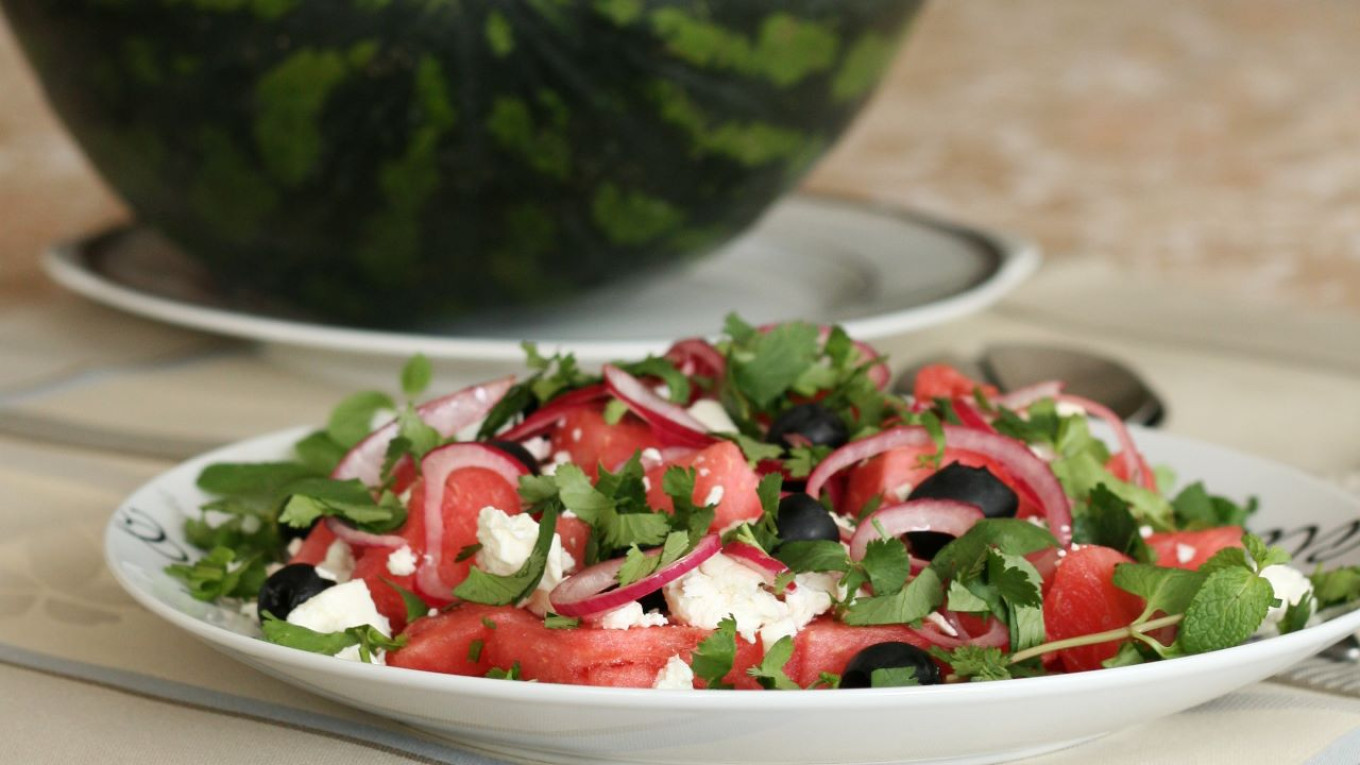
A Message from The Moscow Times:
Dear readers,
We are facing unprecedented challenges. Russia's Prosecutor General's Office has designated The Moscow Times as an "undesirable" organization, criminalizing our work and putting our staff at risk of prosecution. This follows our earlier unjust labeling as a "foreign agent."
These actions are direct attempts to silence independent journalism in Russia. The authorities claim our work "discredits the decisions of the Russian leadership." We see things differently: we strive to provide accurate, unbiased reporting on Russia.
We, the journalists of The Moscow Times, refuse to be silenced. But to continue our work, we need your help.
Your support, no matter how small, makes a world of difference. If you can, please support us monthly starting from just $2. It's quick to set up, and every contribution makes a significant impact.
By supporting The Moscow Times, you're defending open, independent journalism in the face of repression. Thank you for standing with us.
Remind me later.



